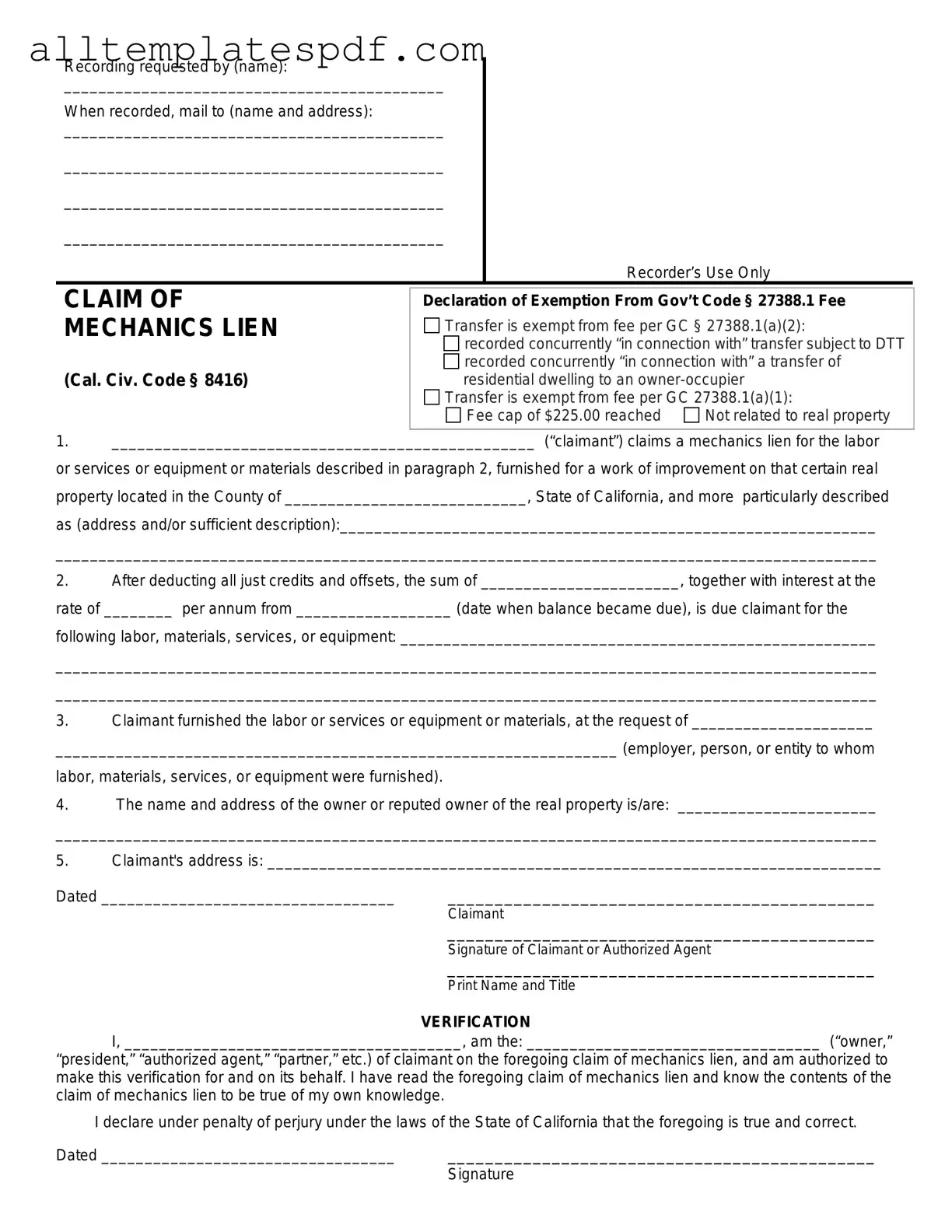Filing a Mechanics Lien in California can be a complex process. Many individuals make mistakes that can delay or invalidate their claims. One common error is failing to include accurate property descriptions. A vague or incorrect property description can lead to confusion and may result in the lien being challenged.
Another frequent mistake is not adhering to the required timelines. California law stipulates specific deadlines for filing a Mechanics Lien. Missing these deadlines can jeopardize a claimant's right to enforce the lien. It is crucial to be aware of these timelines and ensure that all documents are submitted on time.
Some individuals neglect to provide the necessary supporting documentation. This includes contracts, invoices, or other relevant papers that substantiate the claim. Without this documentation, the lien may lack the necessary proof to be upheld. Ensuring that all supporting documents are included is essential for a successful filing.
Inaccurate information can also lead to significant issues. This includes misspellings of names, incorrect addresses, or wrong dates. Such inaccuracies can create complications in processing the lien and may even result in its dismissal. Double-checking all information before submission is a wise practice.
Another mistake is failing to serve the proper parties. California law requires that certain individuals or entities be notified when a Mechanics Lien is filed. Not serving these parties can lead to legal challenges and may weaken the claim. It is important to understand who needs to be notified and ensure that they receive the necessary documentation.
Some people overlook the importance of notarization. Certain documents related to the Mechanics Lien may need to be notarized to be considered valid. Failing to have the necessary signatures notarized can result in complications during the enforcement of the lien. Proper notarization should not be neglected.
Finally, individuals may not be aware of their right to consult with a legal professional. While it is possible to file a Mechanics Lien independently, seeking guidance can help avoid common pitfalls. A legal expert can provide valuable insights and ensure that all requirements are met, ultimately protecting the claimant's interests.
